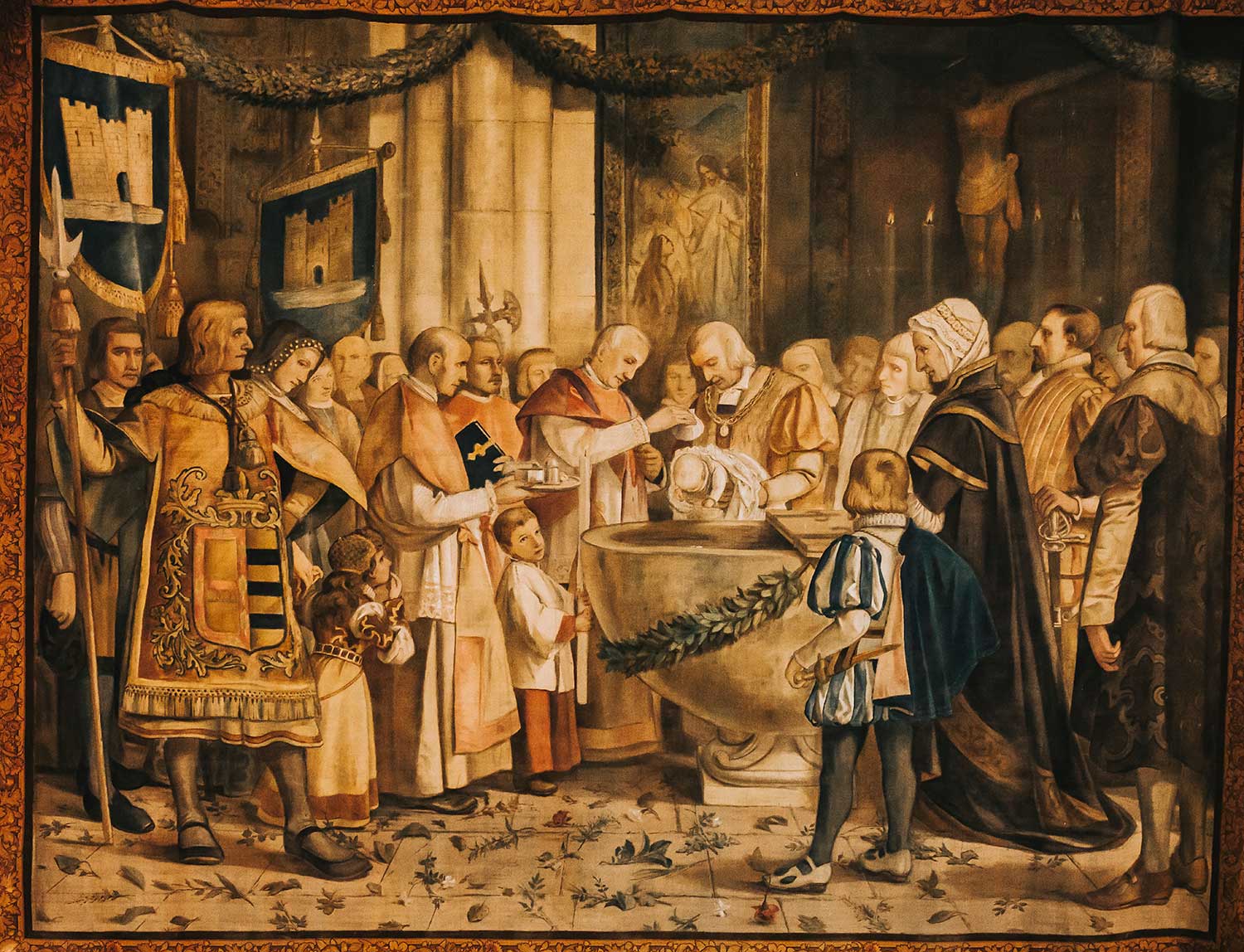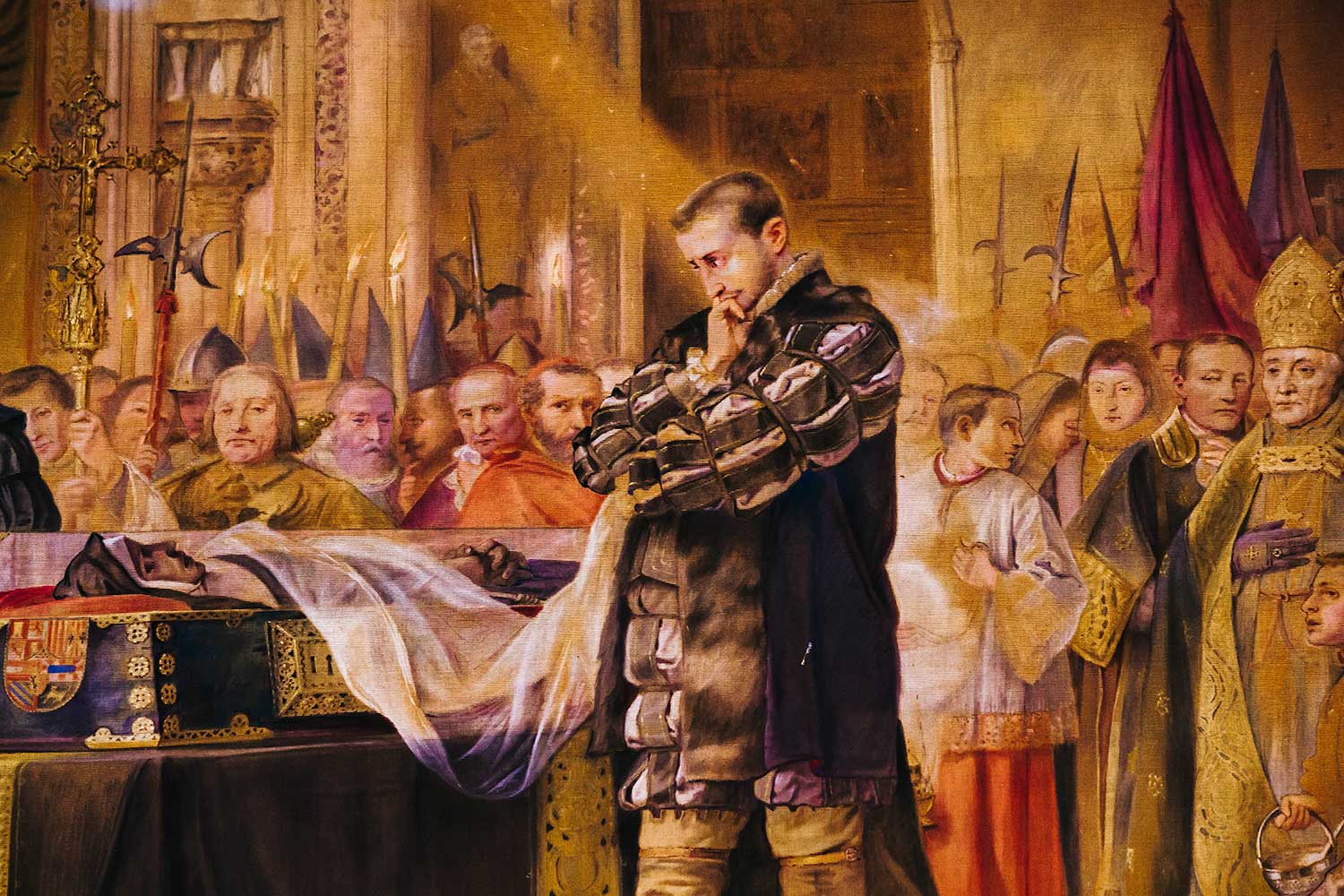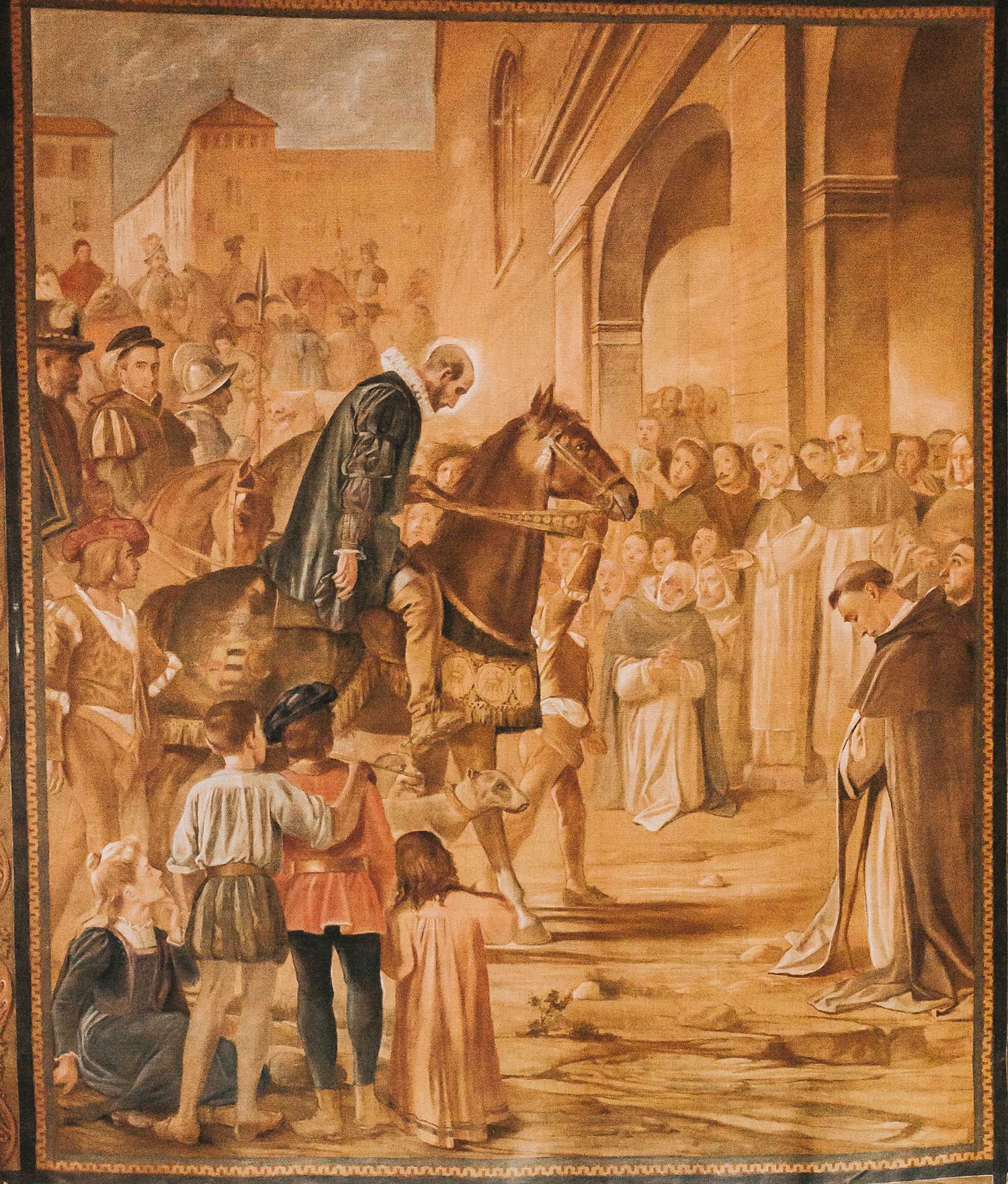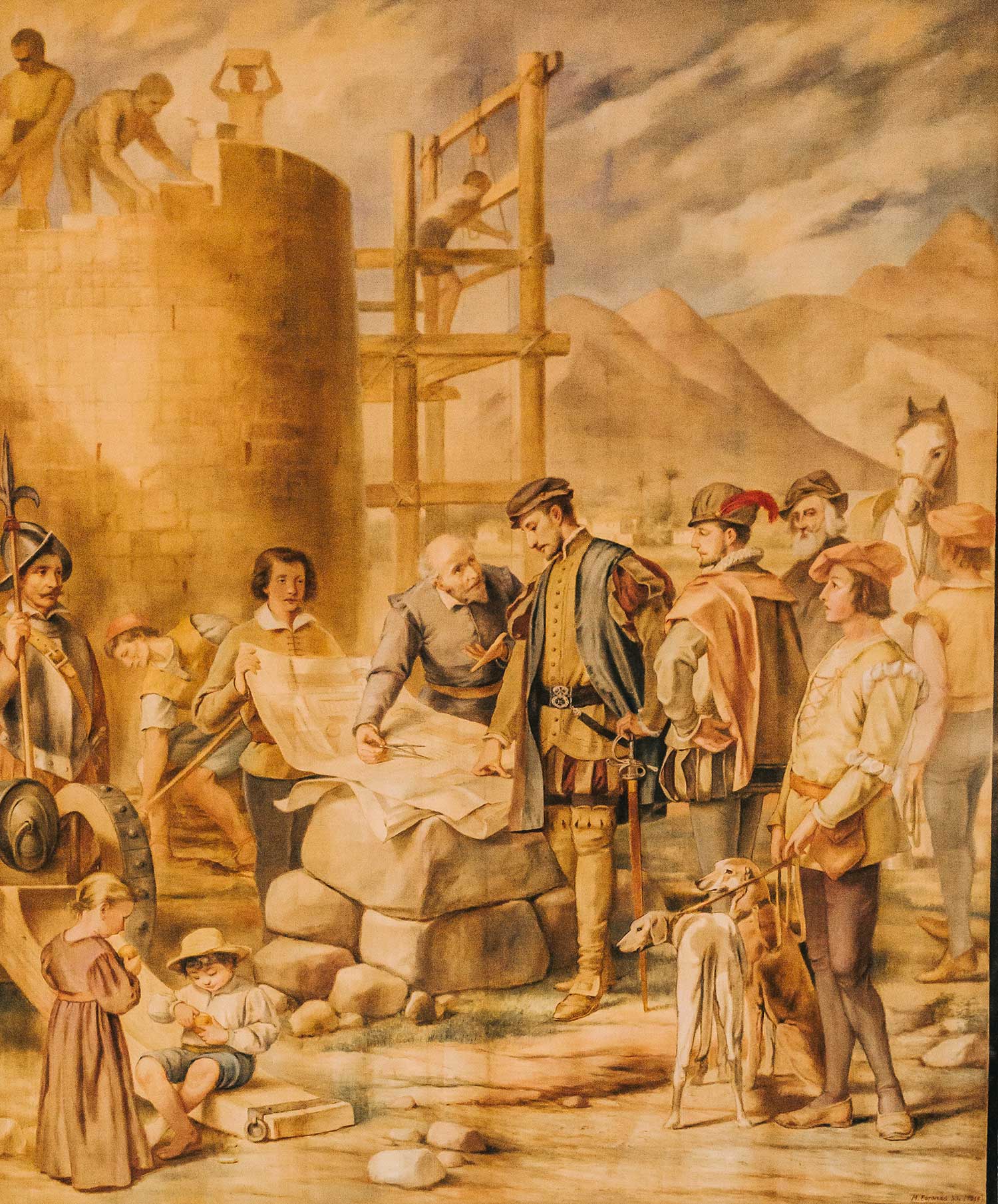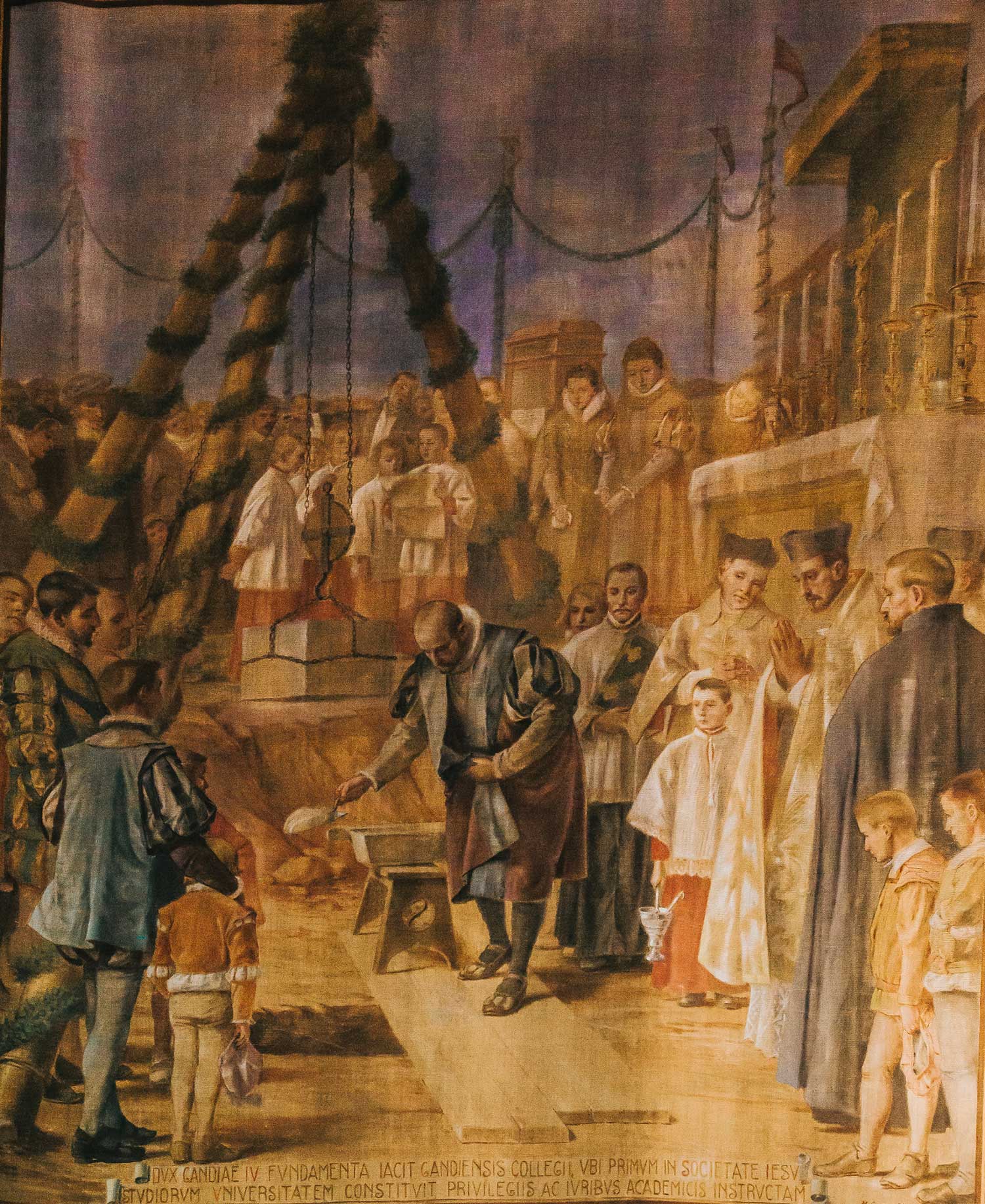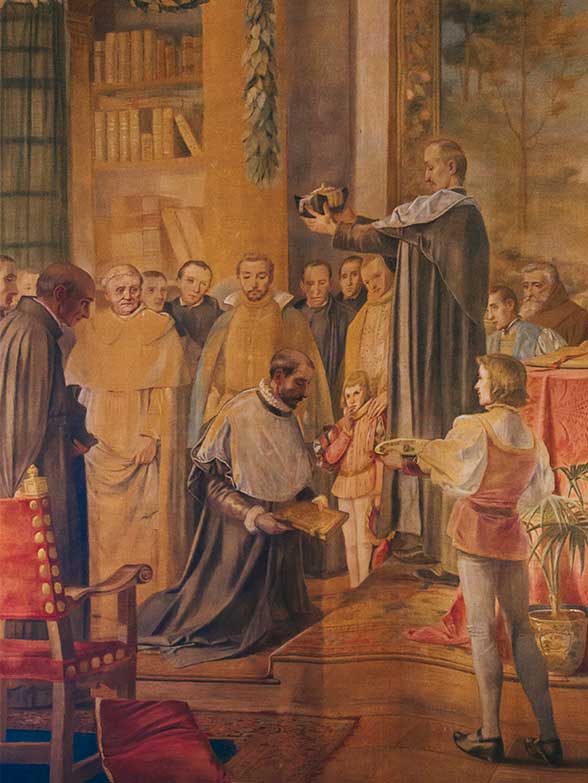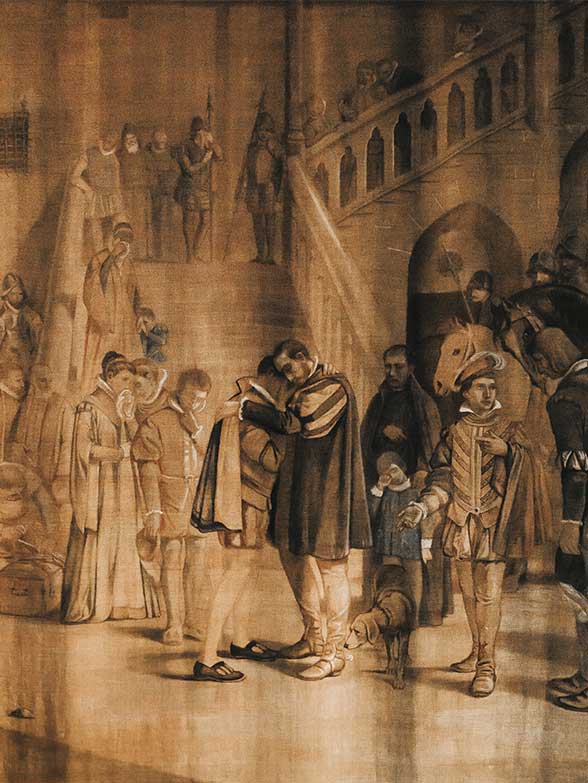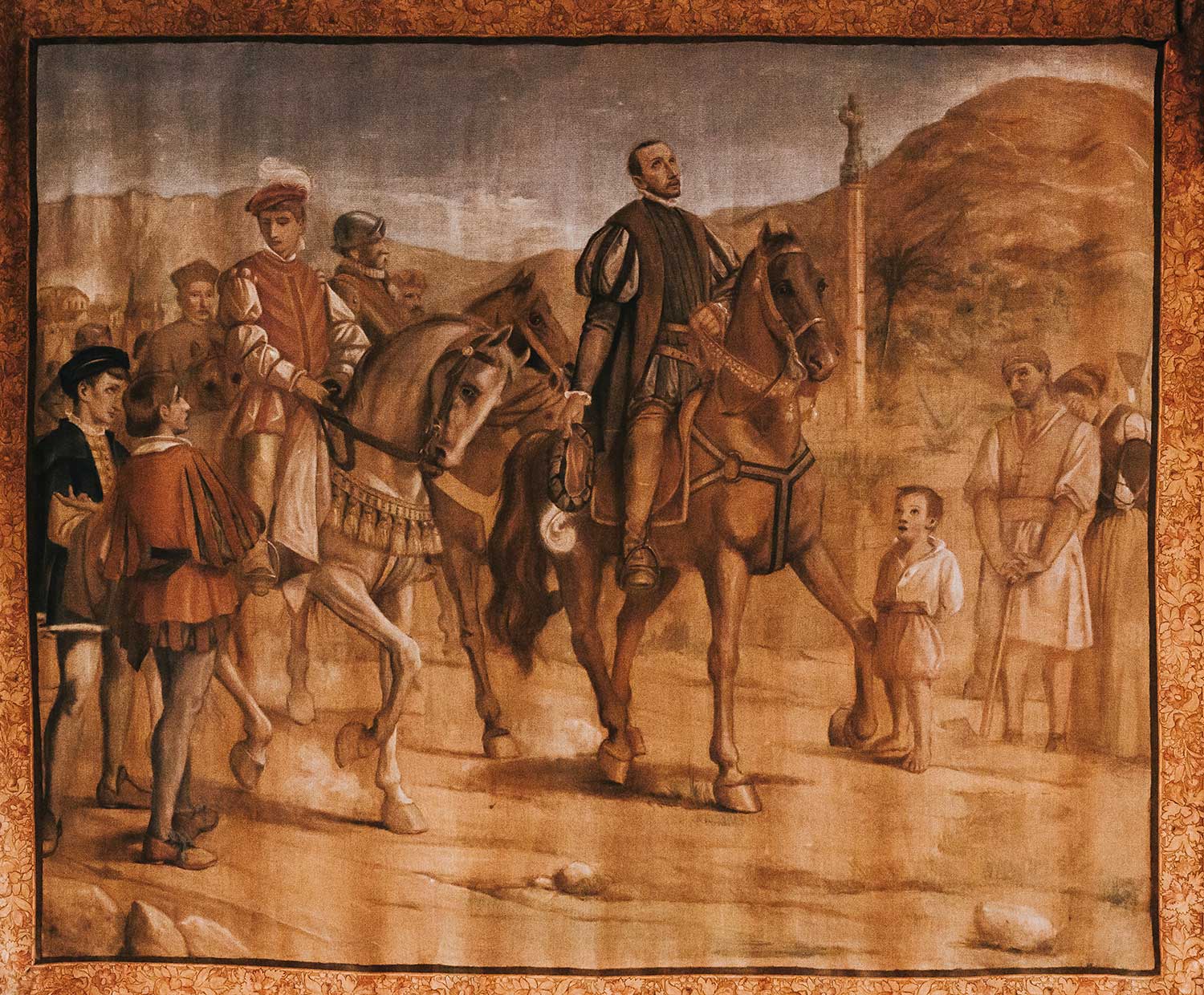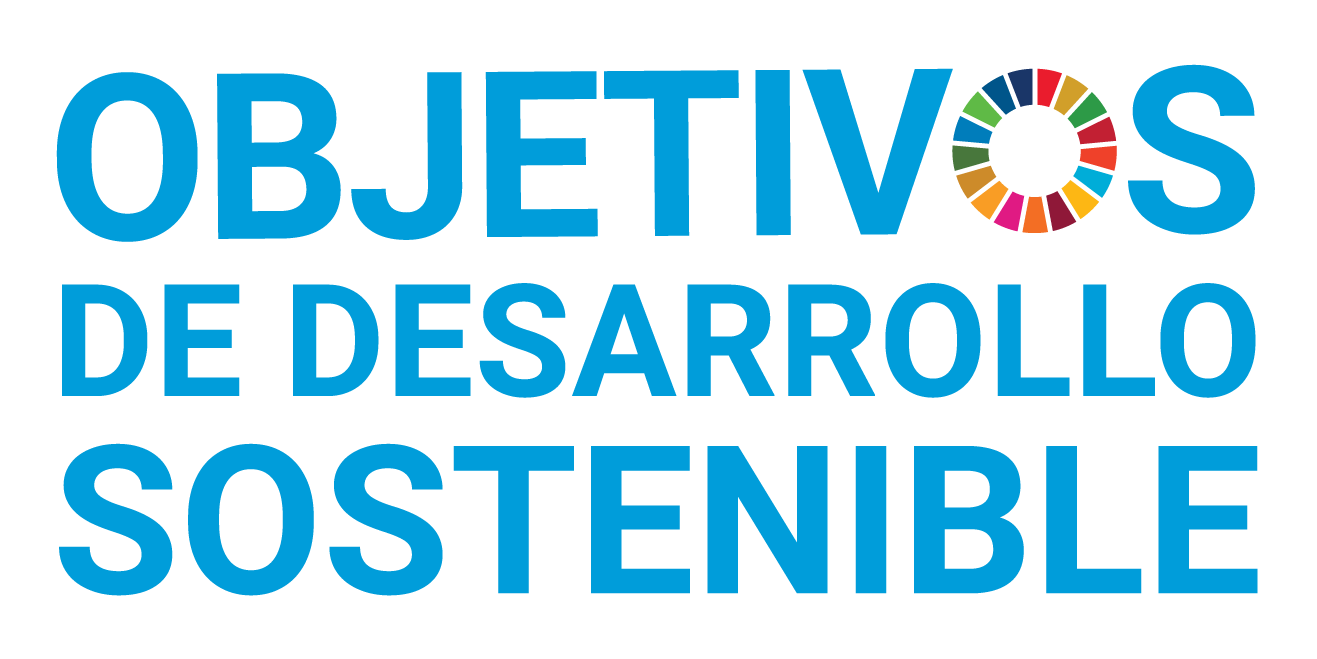CLOTH PAINTINGS IN THE CROWN HALL
The collection of cloth paintings in the Crown Hall of the Palau Ducal dels Borja de Gandia forms a series set of eight large-format paintings, known as a history painting: a visual way of narrating the historical events in the life of Francisco de Borja through memory. In other words, a “modern” way of interpreting the past. This series of paintings describe different episodes of Francisco de Borja’s biography in a clockwise direction, adapting to the spaces between pillars, windows and walls.
They were made by the painter and Jesuit brother Martín Coronas (1862-1928). They follow the romantic trend of the late nineteenth century that seeks to emulate the techniques of the past, specifically the Middle Ages.
They imitate the tapestry technique with various resources, including the textures of its execution and the exhibition hanging without a frame. We find them named and cataloged as tapestry, false tapestries, oil on tapestry, oil on canvas, tempera and oil on canvas. They are actually paintings on cellulosic fiber supports of different natures, similar to sackcloth.
The collection.
Following the chronological order of events we can see:
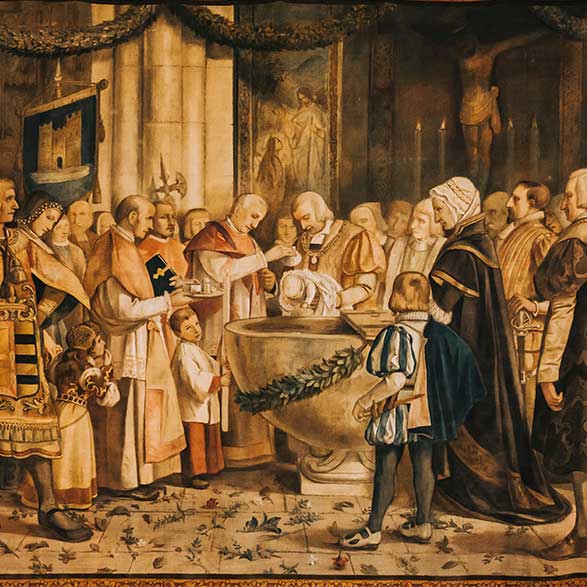
The Baptism of Francis Borja in the Collegiate Church of Gandia.
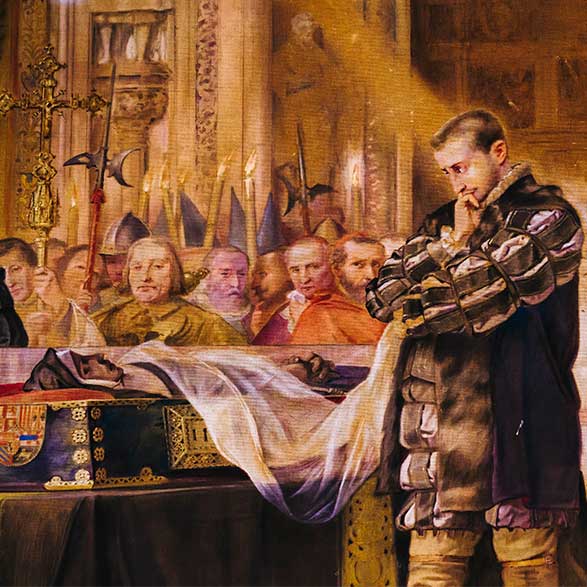
Francis Borja before the corpse of the Holy Roman Empress Isabella of Portugal (364 × 260 cm, 1918).
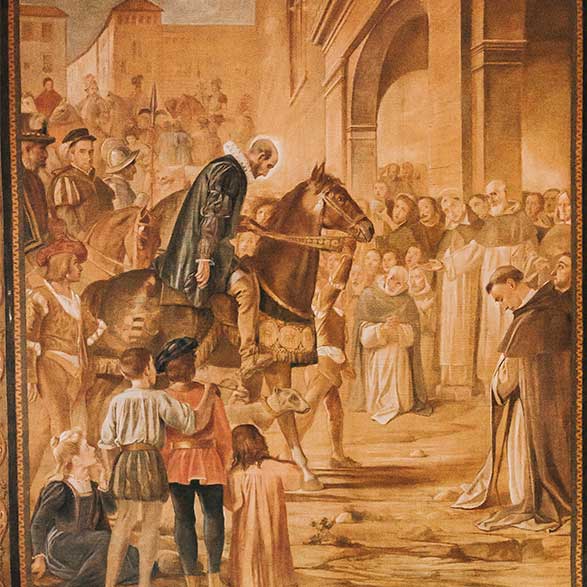
The arrival of Francis Borja to the Dominican Convent of Llombai (372 × 323 cm, 1918).
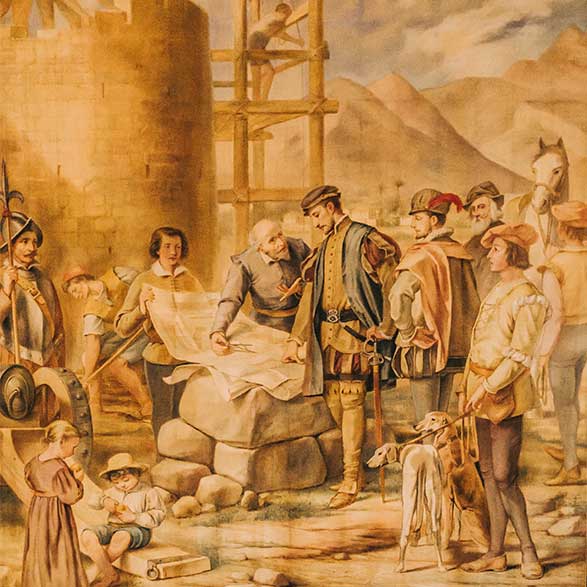
Extension of the city walls of Gandia(368×310 cm, 1918)
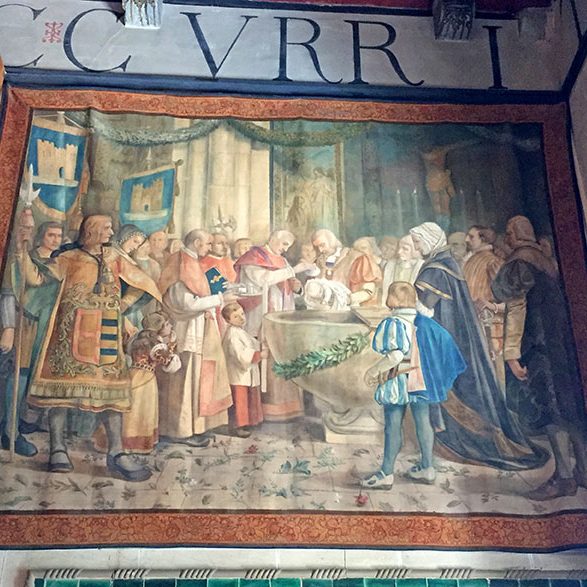
The Baptism of Francis Borja in the Collegiate Church of Gandia.
The Baptism of Francis Borja in the Collegiate Church of Gandia.
The scene shows the baptism of Francis Borja in the presence of the ducal family and next to an entourage with a halberdier guard and the city banner-bearers. The painter’s intention is to demonstrate the Gandian origin of the anointed child and his connection to the city which he will later govern as Duke.
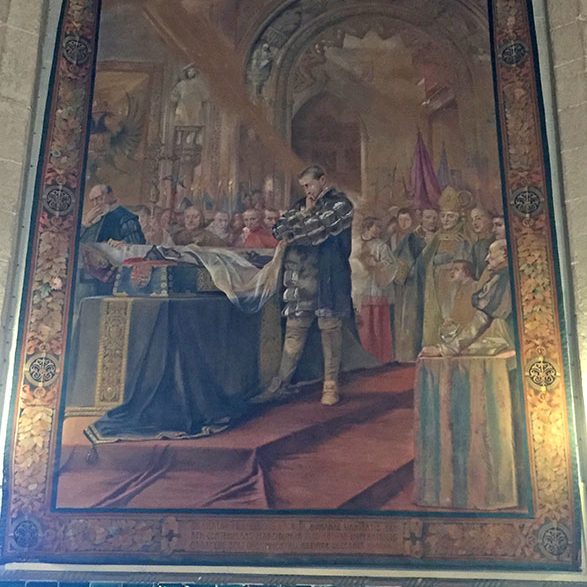
Francis Borja before the corpse of the Holy Roman Empress Isabella of Portugal (364 × 260 cm, 1918).
Francis Borja before the corpse of the Holy Roman Empress Isabella of Portugal (364 × 260 cm, 1918).
This is one of the most frequently pictured scenes in the Saint’s life, and according to tradition, it was intimately linked to his conversion.
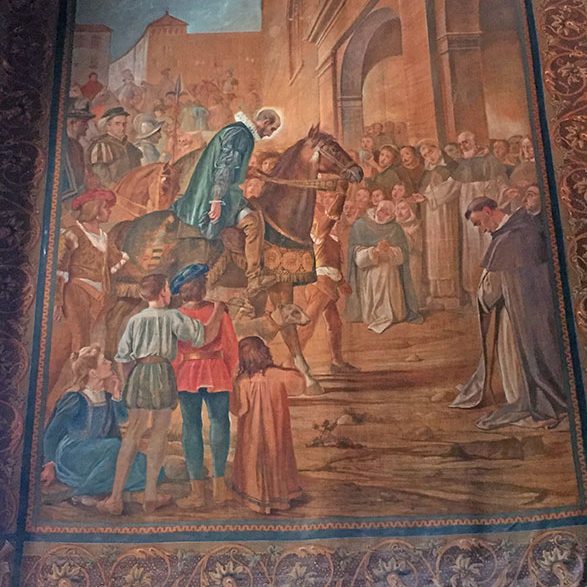
The arrival of Francis Borja to the Dominican Convent of Llombai (372 × 323 cm, 1918).
The arrival of Francis Borja to the Dominican Convent of Llombai (372 × 323 cm, 1918).
Francis Borja, as the first Marquis of Llombai, founded the Dominican Convent in this town. In this scene the Marquis is being welcomed by the community upon his arrival on horseback.
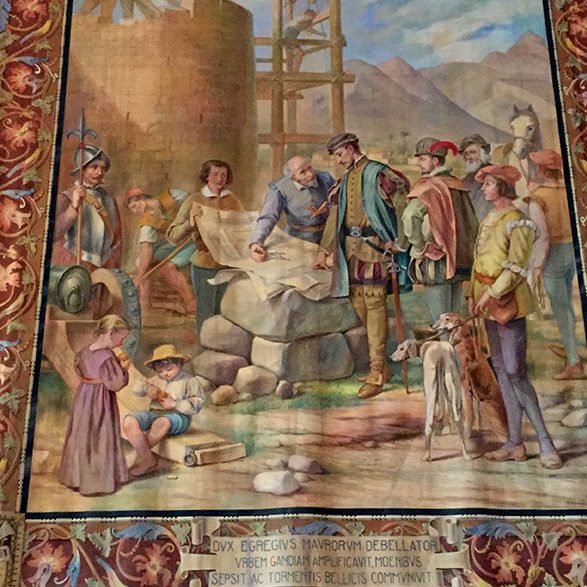
Extension of the city walls of Gandia(368×310 cm, 1918)
Extension of the city walls of Gandia(368×310 cm, 1918)
The painting focuses on the construction of a wall tower, with a fairly real depiction of the Montdúver mountain range in the background.
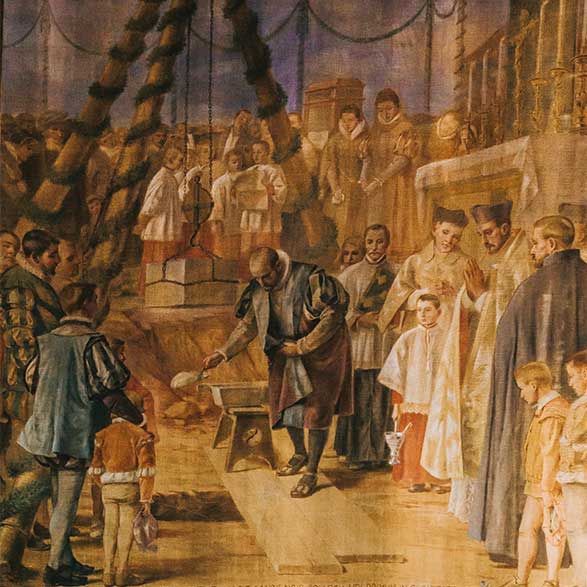
Francis Borja lays the first stone of the University of Gandia (380 x 334 cm, 1918)
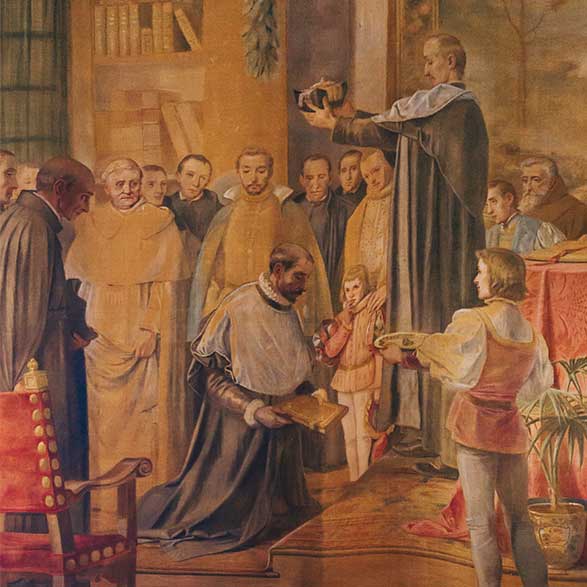
The Duke of Gandia taking his doctorate in Theology (400×234 cm, 1920)
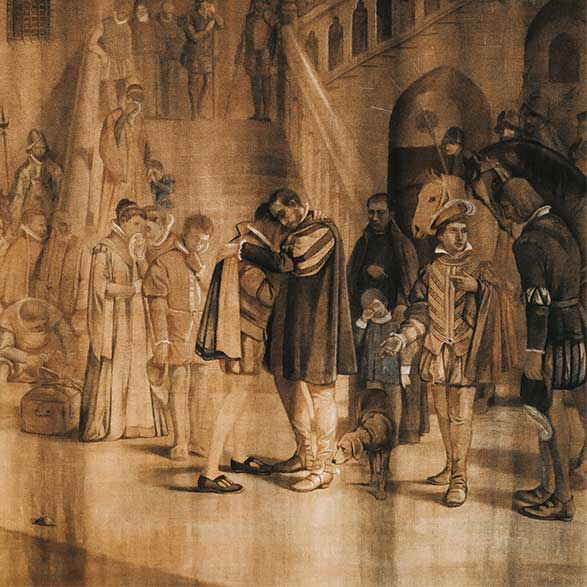
Francis Borja bids farewell to his children before leaving for Rome (384 x 323 cm. Ca 1920)
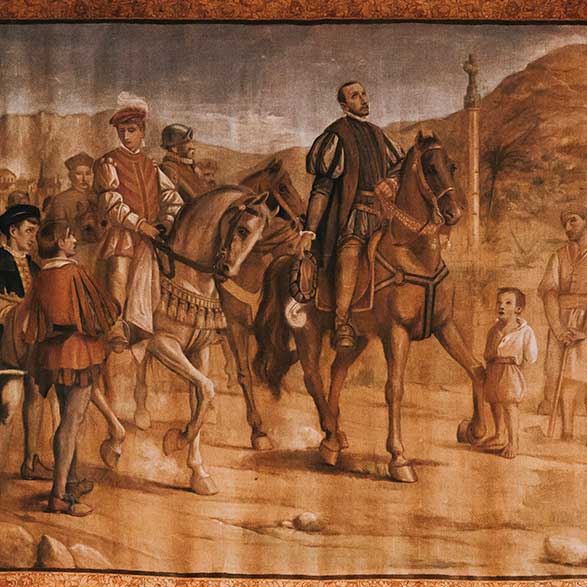
Francis Borja leaving Gandia on his way to Rome(384 x 323 cm)
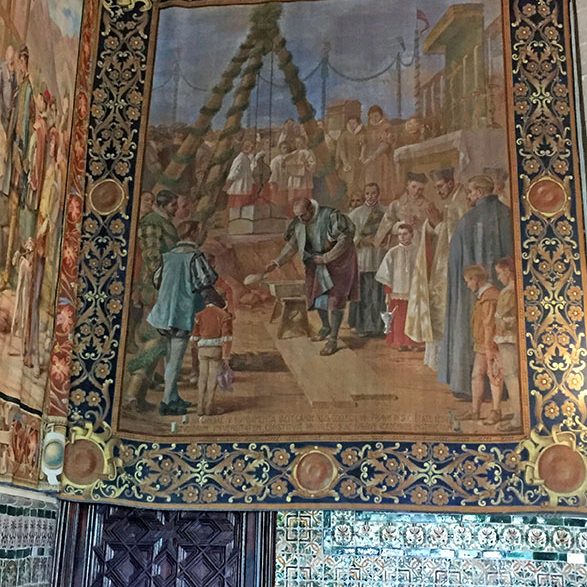
Francis Borja lays the first stone of the University of Gandia (380 x 334 cm, 1918)
Francis Borja lays the first stone of the University of Gandia (380 x 334 cm, 1918)
The most important project undertaken by the Duke in Gandia was the building of the College of St Sebastian, later elevated to the status of a University by papal bull from Pope Paul III, thus becoming the first Jesuit university in the world.
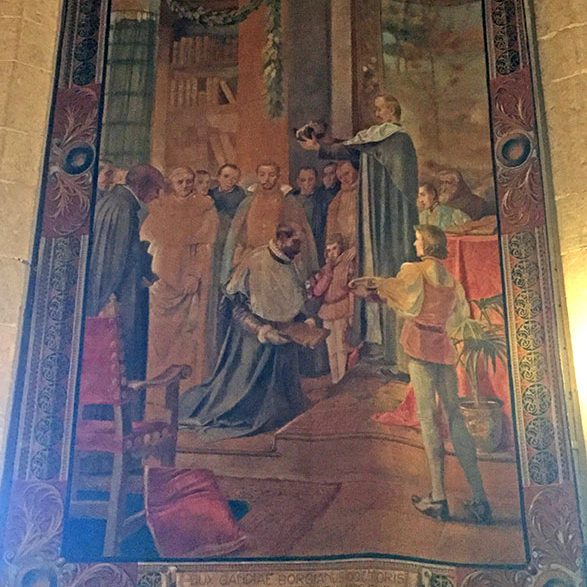
The Duke of Gandia taking his doctorate in Theology (400×234 cm, 1920)
The Duke of Gandia taking his doctorate in Theology (400×234 cm, 1920)
It was on 20 August 1550 when Francis Borja was awarded his doctorate degree in Theology after studying at the same university he founded. The painting seems to represent a simple, almost intimate and improvised, ceremony.
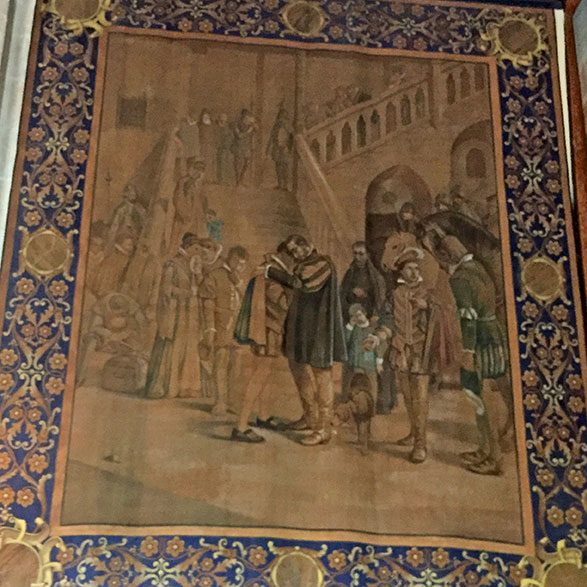
Francis Borja bids farewell to his children before leaving for Rome (384 x 323 cm. Ca 1920)
Francis Borja bids farewell to his children before leaving for Rome (384 x 323 cm. Ca 1920)
This is the same scene painted by Goya for the chapel of the Saint in the Valencia Cathedral, and in both cases the stately staircase is the scene of the events, but in the Gandia version the staircase has already been restored by the Jesuits. Here, Master Coronas focuses on the embrace between Francis and his eldest son Carlos, who will later become the 5th Duke of Gandia.
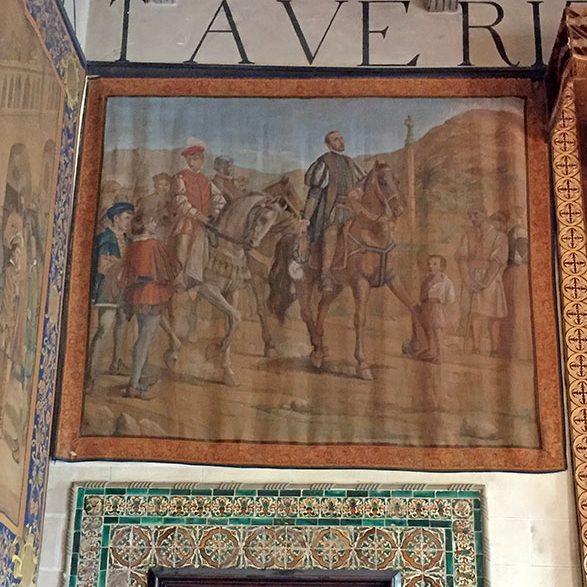
Francis Borja leaving Gandia on his way to Rome(384 x 323 cm)
Francis Borja leaving Gandia on his way to Rome(384 x 323 cm)
This took place on 30 August 1550. Francis Borja is accompanied by his son Juan and part of his entourage, on his way out of the city of Gandia heading to Rome, where he will begin his new stage in life as a Jesuit. Behind the horse’s head, we can see the ancient Gothic cross at the municipal boundary, which later disappeared in the 20th century.
PALAU DUCAL DELS BORJA DE GANDIA
C/ Duc Alfons el Vell, 1.
39.966117, -0.180098
46701 Gandia (Valencia) ESPAÑA




